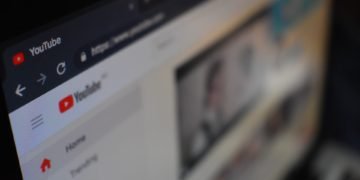Nokia Corp. (NYSE: NOK) looks to boost margins in a moderate growth environment in coming years and plans to reduce headcount while executing a more focused approach to its target markets. The company conducted a virtual Capital Markets Day recently and new CEO Pekka Lundmark laid out the company’s plan going forward.
On the way to its 2023 growth and margin goals, Nokia will cut up to 10,000 jobs over an 18-24-month period while shifting investment into growth areas. The company reaffirmed its 2021 outlook which includes midpoint sales guidance of approximately 21.2 billion euros, down from revenue of 21.9 billion euros for 2020.
Off the lower base, the adjusted operating margin was guided in a range of 7%-10%, compared with the 9.6% generated in 2020. Nokia expects to be free cash flow positive in 2021. By 2023, Nokia looks to grow faster than its addressable market, to raise its adjusted operating margin to the 10%-13% range, and generate ‘clearly positive’ free cash flow.
Nokia has seen its telecom equipment market share decline in recent years. Huawei has been the big share-gain winner since 2014, but Huawei’s growth appears to be slowing as more nations exclude the Chinese gear market from their public networks. Ericsson has grown in recent years and has now pulled level with Nokia in overall equipment sales, even though Ericsson has much less wireline presence than Nokia.
The new CEO, who took over in September 2020 from long-time leader Rajeev Suri, has inherited a difficult operational challenge in the mobile networks space. For 2020, network revenue declined 7% and within that, mobile infrastructure sales were down 8% year-over-year. Whereas Nokia’s global revenue declined 5% in 4Q20, sales for rival Ericsson rose 5%. Following capital markets day, investors now have a clearer picture of the challenges ahead.
RECENT DEVELOPMENTS
On 3/18/21, Nokia laid out its multi-year strategy under new leadership. The company outlined how it intends to speed up transformation in order to improve profitability. The plan, if executed, will enable Nokia to deliver consistent double-digit comparable (adjusted) operating margins in 2023.
Another opportunity will be connected digital enterprise, resulting in significant growth in Nokia’s enterprise opportunity.
The company will incorporate sustainability into its operating roadmap and strategy. A key element of the Reset phase is moving away from being an end-to-end provider, which has been a ‘cornerstone’ of Nokia’s market positioning.
The groups are Mobile Networks; Network Infrastructure. The groups have shared executives as well, in areas including customer experience, finance, legal, strategy & technology, people, and corporate affairs. The group structure is designed to serve the over-arching goals of securing full portfolio competitiveness in mobile and reducing the cost base.
The second phase, Accelerate, is for the 2022-time frame. The company will accelerate competitiveness and aim to expand margins through technology leadership. Accelerate goals include increasing the digitalization of operations; enhancing margins through improved competitiveness and technology investments, and creating growth opportunities through new products and services.
The final phase, Scale, will feature a restructured Nokia setting its sights on new value resulting from next-generation critical networks. These include virtual radio access networks (v-RAN), cloud-native software, as-a-service business models, and other unfolding opportunities.
Building on that, the new Nokia will focus on technology leadership in the four business units.
CFO Marco Wiren addressed the restructuring that management sees as needed to attain new growth and margin goals. Along with creating a leaner corporate center, restructuring will be led by the business groups. The goal will be to lower the annual cost base by 600 million euros annually by 2023. As many as 10,000 employees will leave the company over an 18-24 month timeframe.
The CFO reiterated 2021 guidance and laid out targets for 2023. For all of 2021, Nokia is guiding for revenue of 20.6-21.8 billion euros, which at the 21.2 billion midpoint would be down 3% in IFRS from 2020 levels. Off the lower base, the adjusted operating margin was guided in a range of 7%-10%, compared with the 9.6% generated in 2020. Nokia expects to be free cash flow positive in 2021 and to deliver a return on invested capital (ROIC) of 10%-15%, vs. 11.9% for 2020.
By 2023, Nokia looks to grow faster than its addressable market, which is expected to be growing in the low single-digit range at that time. At the business group level, non-IFRC operating margin targets are 5%-8% for mobile networks; 9%-12% for network infrastructure; 8%-11% for cloud and network services; and 75% for Nokia Technologies, which includes IP licensing.
The overall operating margin target range for 2023 is 10%-13%. Nokia also believes it can generate ‘clearly positive’ free cash flow, and deliver ROIC of 15%-20%. Nokia also used the forum of investor day to celebrate some key wins. These include a five-year contract with AT&T to provide 5G network implementation in the C-band, which is situated between 2.4 GHz and 5.0 GHz. C-band was formerly used by satellite TV providers; given that AT&T owns DirecTV, this should be a profitable use of the already owned spectrum.
Another collaboration cited by Nokia was a partnership with Microsoft on cloud solutions for the enterprise. Nokia has seen its telecom equipment market share decline in recent years. According to data from Dell’Oro, Huawei led with a 31% share at year-end 2020, while Nokia and Ericsson were even with 15% each.
Huawei has been the big share-gain winner since 2014, growing from a 24% share in 2014. But Huawei’s market share may be capped going forward as more nations exclude the Chinese gear market from further equipment in their public networks. In 2014, Nokia had a 24% share, while Ericsson’s was about 16%. After several years of losing share to Huawei, Ericsson has grown in the past few years and has now pulled level with Nokia in overall equipment sales.
That is despite the fact that Ericsson has much less wireline presence than Nokia and is primarily a provider of mobile network infrastructure. Overall, Ericsson appears to be best-positioned in this global arms race, given its strong presence in mobile as excitement builds around 5G; Huawei’s political pressures; and Nokia’s struggles, such as losing 5G share at Verizon to Samsung.
Nokia has an extensive global presence, strong legacy customer relationships, leading technology and IP, and financial strength. The change at the top is positive, but it also signals that Nokia needs to reinvigorate its 5G efforts. Following capital markets day, investors now have a clearer picture of the challenges ahead. On balance, we believe that a HOLD rating remains prudent on the NOK ADSs.
EARNINGS & GROWTH ANALYSIS
Nokia took extensive restructuring and impairment charges in 4Q20.
For all of 2021, Nokia is guiding for revenue of 20.6-21.8 billion euros, which at the 21.2 billion midpoint would be down 3% in IFRS from 2020 levels. Our initial non-IFRS EPS projection for 2022 is $0.23 per diluted ADS. As 2021 progresses we will review our 2022 outlook, which is highly conservative.
FINANCIAL STRENGTH & DIVIDEND
The company did not issue a dividend for 2020 and given the imperative of repairing the mobile networks business. The company will review its progress and based on that progress, the board will consider a dividend for 2021. At this time, we continue to expect no dividend for 2021 or 2022.





























































